

Last update: 10/03/16
Today, with electronic communications and devices, companies can easily direct and keep up with their railroad traffic. But in the 1800s and the first half of the 1900s, railroads were more dependent on time tables and schedules. Train engineers and conductors knew that they had a certain allotted time for their train to be on a certain section of track. After that, it could be occupied by another train. Nothing worse than two trains trying to be on the same piece of track at the same time. Train workers relied heavily on their timepieces. While the common man, and lady, depended on their pocket watch to be relatively close to the correct time, those used by railroad conductors were some of the most accurate timepieces of their era.
So what is a railroad grade pocket watch? A railroad grade pocket watch is a pocket watch that meets the physical requirements and operating parameters that were specified by the various railroads. This changed over the years, but generally only to be more strict and lean toward better time keeping. Here's a few key measures:
1) Have at least 17 jewels. A watch movement has many moving gears (called wheels). Each wheel has a central shaft (called an arbor) that it pivots on. Over time, with metal shafts turning in metal holes, you'll get wear that reduces the accuracy. You'll also have friction which reduces the accuracy. To reduce friction and wear, watches would have tiny doughnut-shaped jewels at the end of the shafts (i.e. arbors). These jewels could be natural or man-made rubies. Or sapphires. The more jewels you had, generally the higher grade of watch it was. As time went on, and watches became even more accurate, railroads starting demanding their watches have more than 17 jewels. You'll see 19, 21, and 23 jeweled movements listed among railroad grade watches.
2) Be lever set. Pocket watches could be set in four ways: Pendant/Stem, Lever, Pin, or Key. Pin or key set were mainly on early watches. Most of the pocket watches you see in the late 1800s and going into the 1900s were pendant/stem set, or lever set. The most common was the stem set. Just pull out on the stem, rotate the hands to set the time, then push it back in. Lever set required you to remove the front bezel/glass, and pull out on a little lever that protruded from beneath the dial, usually at the 2:00 or 4:00 position. Once you pulled that lever out, then you could set the hands (using the stem) to the correct time. While much more cumbersome than the stem set watch, it was a safety measure to prevent someone from accidentally setting the watch to the incorrect time by pulling on the stem.
3) Be 16 or 18 size. Pocket watches came in a variety of sizes. Women wore smaller sizes while men wore larger sizes. Generally a size 12, which had a movement that measures 1 17/30 of an inch across, was considered gender neutral (i.e. could be used by a man or woman). Anything smaller was considered a woman's watch, and anything bigger was considered a man's watch. An 18 size watch has a movement that measures 1 23/30 of an inch across. These were more common in the late 1800s. In time, railroads started mandating that railroad grade watches be 16 size, which has a movement of 1 21/30 of an inch across.
4) Be open faced. There are two basic varieties of watch cases: hunter, and open faced. Hunter cases have a front cover over the watch face. You press on the stem for the cover to flip open so you can read the time. An open case lacks this cover, so you just look at the watch to read the time.
5) Not lose or gain more than 30 seconds within a week's time. This one speaks for itself. A railroad grade watch had to be accurate to within 30 seconds a week. That's pretty good for a mechanical watch!
6) Arabic style dial numbers. That means no Roman numerals, just plain old numbers on the watch face/dial.
These were the basic requirements starting in about the 1890s. Before this, they were less uniform, and less stringent. There were railroad watches that didn't meet all these requirements. But basically, you can consider a watch to be railroad grade if it has: at least 17 jewels, is lever set, a size 16 or 18, open faced, and has Arabic style numbers on the face. There were a few other requirements, but you can easily see that a railroad grade pocket watch exemplifies fine craftsmanship that is both functional and artistic. You might also hear the terms "railroad grade" versus "railroad approved". Railroad approved is simply a subset of railroad grade watches that a particular railroad has listed. In other words, the railroads had a list of watch movements that they considered railroad approved (i.e. meets all the requirements). Watches that were simply railroad grade still met the requirements, but they just weren't on this list. Whether a conductor used one from the list, or another that still met the requirements, as long as it was approved by the inspector in the field, it was good to go.

Waltham Riverside movement showing damaskeening pattern
While not any type of requirement, another thing to look for in American pocket watches is damaskeening (also spelled damascening). These are the lines and patterns engraved on the movement case and wheels. This seems to have been an uniquely American art form. It varied from one watch movement to the next, and from one watch manufacturer to the next. It seemed to serve no other purpose than to make the movement pretty, and of course help identify some movements at a glance.
Below you'll find what I have in my collection. Enjoy.

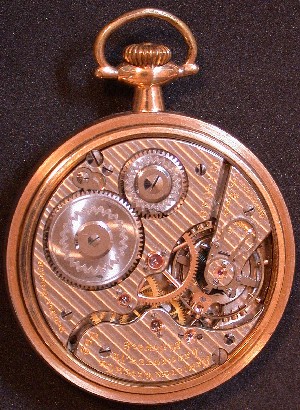
Hamilton 992. This watch is often regarded as THE railroad watch. This particular watch is a size 16, with 21 jewels. It was made in 1913. The dial is a full Montgomery dial (note the number 6 and all the minute numbers). The case is yellow gold filled. The 992 was a railroad grade and railroad approved movement.

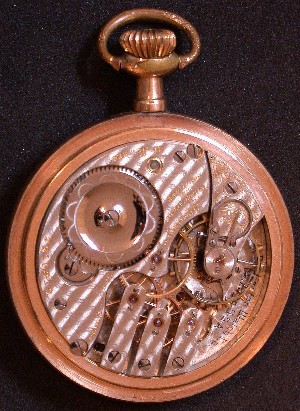
Burlington Special. The Burlington Special was actually made by the Illinois Watch Company. This is a size 16, with 19 jewels. It was made in 1909 and has a full Montgomery dial. The case is yellow gold filled. While this can quality as a railroad grade watch, I have not seen it on the list of railroad approved watches.


Hamilton 934. This Hamilton watch is a larger size 18, common in the late 1800s and early 1900s. The movement has 17 jewels and it was made in 1905. The case is sterling silver. The 934 was a railroad grade and railroad approved movement.


Elgin BW Raymond. This Elgin watch is a size 16 and has 21 jewels. It was made in 1925. The case is yellow gold filled. The BW Raymond was a railroad grade and railroad approved movement.


Hamilton 972. This Hamilton watch is a size 16 with 17 jewels. It was made in 1910. The case is a nickel alloy. The 972 was a railroad grade and railroad approved movement.


Waltham Crescent Street. This Waltham watch is a size 16 with 21 jewels. It was made in 1918. The case is a nickel alloy. The Crescent Street was a railroad grade and railroad approved movement.
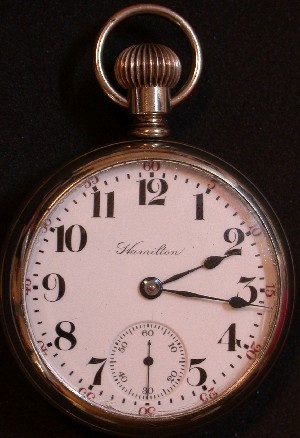

Hamilton 924. This Hamilton watch is an 18 size with 17 jewels. It was made in 1906. The movement is enclosed in a nickel salesman case. A salesman case had a crystal on the front and back so that the movement could be shown without having to removing the back. The 924 was a railroad grade and railroad approved movement.


Illinois Lakeshore. This Illinois watch is an 18 size with 17 jewels. It was made in 1904. The movement is enclosed in a nickel salesman case. While the Lakeshore can quality as a railroad grade watch, I have not seen it on the list of railroad approved watches.
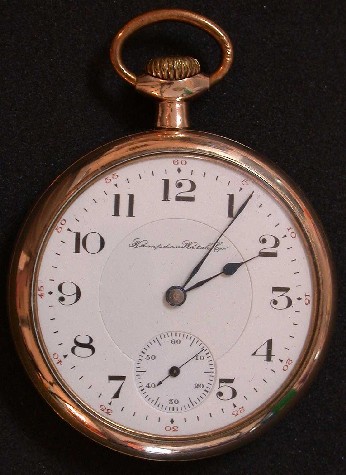

Hampden WM McKinley. This Hampden watch is a 16 size with 17 jewels. It was made in 1904. I really like this open, bridge style movement as I think it really shows off the mechanics of the watch. The WM McKinley was a railroad grade and railroad approved movement.


Illinois Bunn Special. This Illinois watch is a 16 size with 21 jewels. It was made in 1917. The sunburst damaskeening is gorgeous. More collectible versions of this watch can be very expensive. The Bunn Special was considered a high-end railroad watch. The Bunn Special was a railroad grade and railroad approved movement.


Waltham Riverside. This Waltham watch is a 16 size with 17 jewels. The serial number dates it to about 1901. While a Riverside movement is generally considered a railroad grade, this particular one would not be, and would not be railroad approved because it is pendant set instead of lever set. Even so, it still keeps great time.
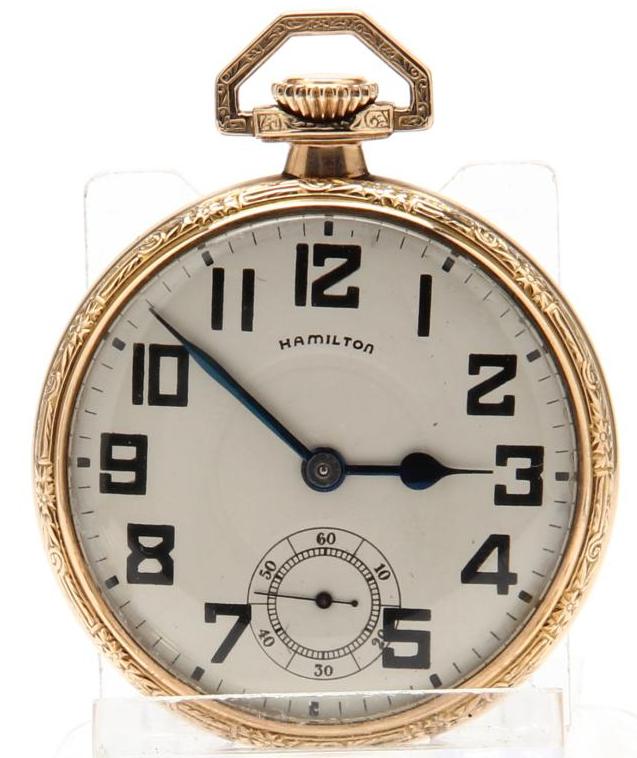
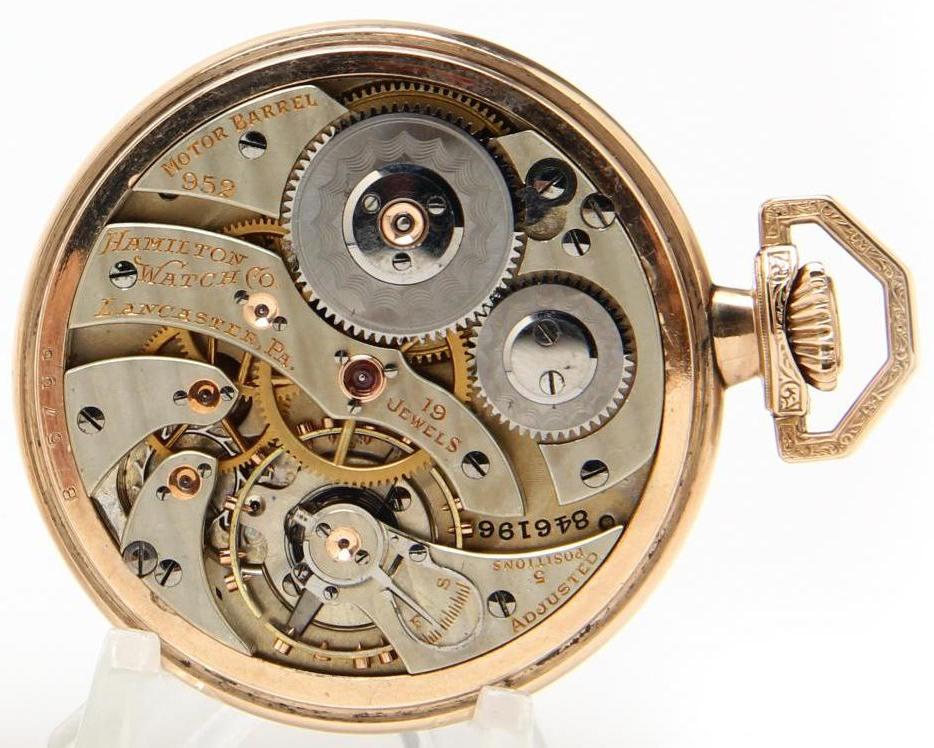
Hamilton 952. It has 19 jewels, and adjusted to 5 positions. It is a 16 size movement, that is lever set. The serial number of 846196, dates it to 1907. The 952 was a railroad grade and railroad approved movement.


Elgin B.W. Raymond. Another B.W. Raymond watch. It has 21 jewels, and adjusted to 5 positions. It is a 16 size movement, that is lever set. The serial number of 30032871 dates it to 1927. It has a 10K rolled gold plate case, which is typical of this era. The B.W. Ramond was a railroad grade and railroad approved movement.

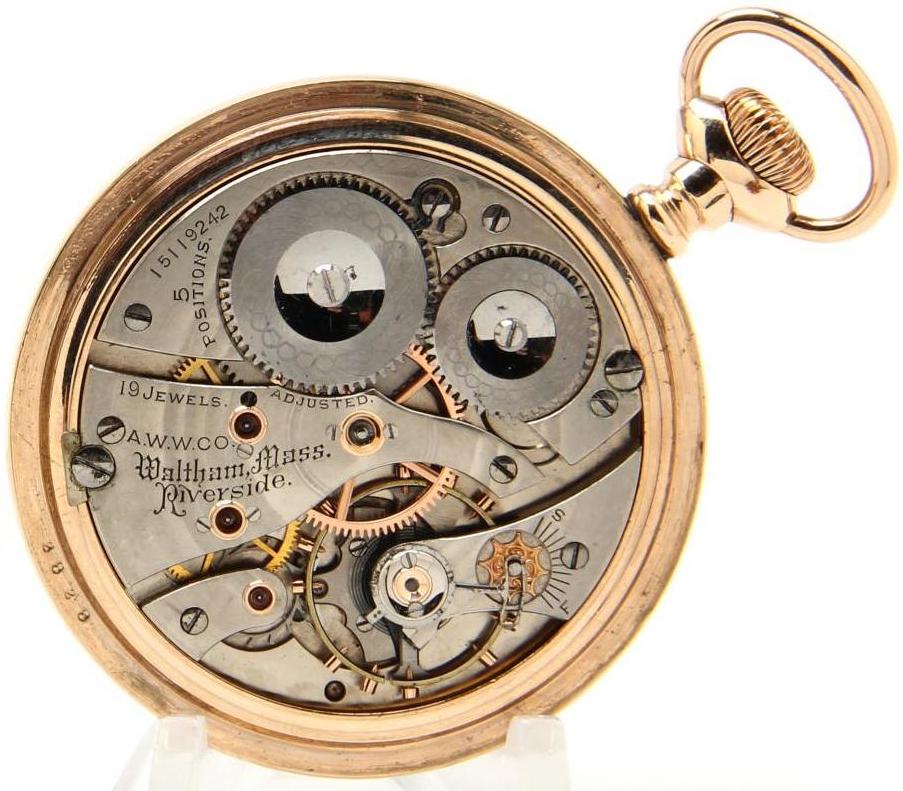
Waltham Riverside. It has 19 jewels, and adjusted to 5 positions. It is a 16 size movement, that is lever set. The serial number of 15119242 dates it to 1906. Unlike my other Riverside that is pendant set, this Riverside is lever set so it was a railroad grade and railroad approved movement.
Pocket Watch Documents (as images)
Railroad Grade Watches Listing of railroad grade watch movements by company.
Railroad Grade Watches (CPR 1899 to 1910) Listing of CPR railroad grade watch movements by company.
Railroad Grade Watches (1930) Listing of railroad grade watch movements by company.
Watch Serial Number Dates (Waltham, Hamilton) Determine year of manufacture by movement serial number.
Watch Serial Number Dates (Elgin, Hampden, Illinois) Determine year of manufacture by movement serial number.
Pocket Watch Sizes Listing of the various pocket watch sizes.
Pocket Watch Websites
https://pocketwatchdatabase.com Gives info and estimated values on pocket watches
http://www.oldwatch.com Sells, well....old watches.
http://www.barrygoldberg.net Wrote a mini-booklet on watches and has a great collection.
http://www.sentimentaltyme.com A local watch business run by Jim Sholders. He has lots of antique pocket watches and wrist watches. Jim also offers repair service. While his main business is in Burgaw, NC, he also has an indoor area at the NC State Fairgrounds Fleamarket on Blue Ridge Rd., Raleigh, NC. I encourage anyone interested in pocket watches to swing by and take a look at what he has to offer. It's neat to see so many NICE pocket watches at one place.
http://pocketwatcher.zoovy.com Sells watches and accessories. Repair service.
http://www.pocketwatchsite.com Sells watches and stuff. Repair service.
http://www.watchcat.com Sells old watches.
http://www.pocketwatcher.org Sells watches and accessories. Repair service.
http://www.timespastwatches.com Sells watches and accessories.
http://www.goantiques.com Sells watches.
http://www.timemachinewatch.com Sells watches and accessories. Repair service.
http://www.pocketwatchrepairs.net Sells watches AND offers reasonably priced watch repair service.
http://www.nawcc.org The National Association of Watch & Clock Collectors. Great information and message board.
Other Railroad Related Pages On My Site
 Pocket Watches (current webpage)
Pocket Watches (current webpage)
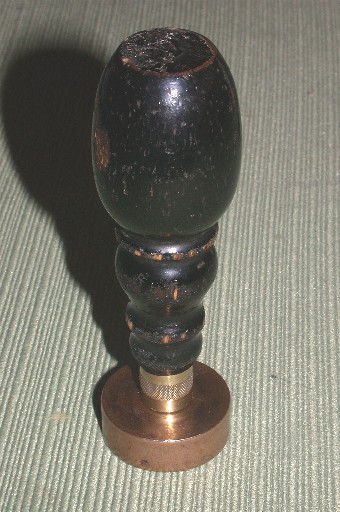 Wax sealers, telegraph, whistle, misc.
Wax sealers, telegraph, whistle, misc.